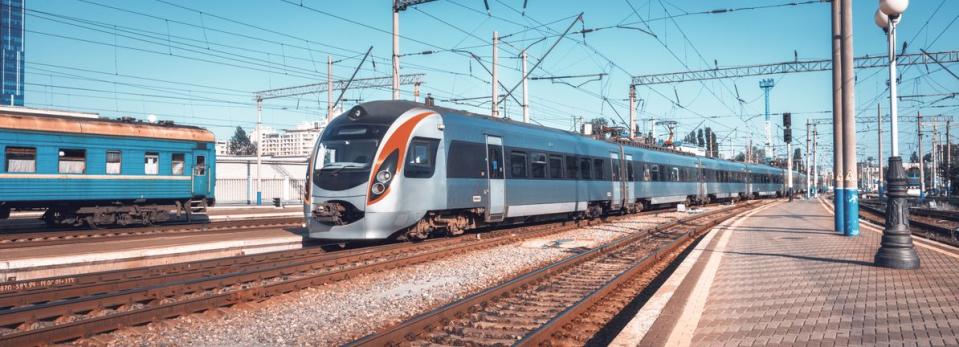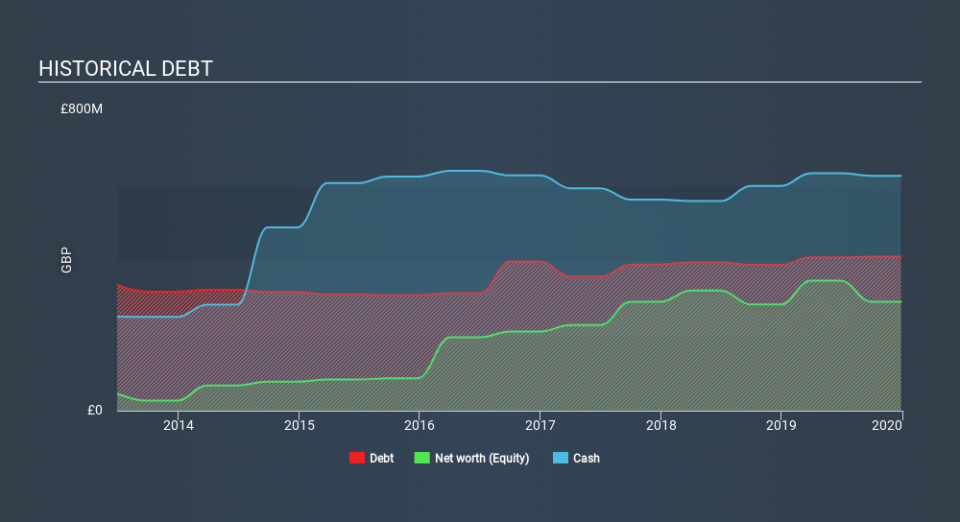These 4 Measures Indicate That Go-Ahead Group (LON:GOG) Is Using Debt Reasonably Well

Some say volatility, rather than debt, is the best way to think about risk as an investor, but Warren Buffett famously said that 'Volatility is far from synonymous with risk'. So it seems the smart money knows that debt - which is usually involved in bankruptcies - is a very important factor, when you assess how risky a company is. Importantly, The Go-Ahead Group plc (LON:GOG) does carry debt. But is this debt a concern to shareholders?
When Is Debt Dangerous?
Debt assists a business until the business has trouble paying it off, either with new capital or with free cash flow. In the worst case scenario, a company can go bankrupt if it cannot pay its creditors. However, a more common (but still painful) scenario is that it has to raise new equity capital at a low price, thus permanently diluting shareholders. Of course, the upside of debt is that it often represents cheap capital, especially when it replaces dilution in a company with the ability to reinvest at high rates of return. When we think about a company's use of debt, we first look at cash and debt together.
View our latest analysis for Go-Ahead Group
What Is Go-Ahead Group's Net Debt?
You can click the graphic below for the historical numbers, but it shows that as of December 2019 Go-Ahead Group had UK£408.8m of debt, an increase on UK£387.0m, over one year. However, it does have UK£623.4m in cash offsetting this, leading to net cash of UK£214.6m.
How Healthy Is Go-Ahead Group's Balance Sheet?
We can see from the most recent balance sheet that Go-Ahead Group had liabilities of UK£1.25b falling due within a year, and liabilities of UK£826.8m due beyond that. On the other hand, it had cash of UK£623.4m and UK£335.0m worth of receivables due within a year. So its liabilities outweigh the sum of its cash and (near-term) receivables by UK£1.11b.
The deficiency here weighs heavily on the UK£525.6m company itself, as if a child were struggling under the weight of an enormous back-pack full of books, his sports gear, and a trumpet. So we'd watch its balance sheet closely, without a doubt. At the end of the day, Go-Ahead Group would probably need a major re-capitalization if its creditors were to demand repayment. Go-Ahead Group boasts net cash, so it's fair to say it does not have a heavy debt load, even if it does have very significant liabilities, in total.
And we also note warmly that Go-Ahead Group grew its EBIT by 12% last year, making its debt load easier to handle. The balance sheet is clearly the area to focus on when you are analysing debt. But it is future earnings, more than anything, that will determine Go-Ahead Group's ability to maintain a healthy balance sheet going forward. So if you're focused on the future you can check out this free report showing analyst profit forecasts.
Finally, a business needs free cash flow to pay off debt; accounting profits just don't cut it. Go-Ahead Group may have net cash on the balance sheet, but it is still interesting to look at how well the business converts its earnings before interest and tax (EBIT) to free cash flow, because that will influence both its need for, and its capacity to manage debt. Over the last three years, Go-Ahead Group actually produced more free cash flow than EBIT. There's nothing better than incoming cash when it comes to staying in your lenders' good graces.
Summing up
Although Go-Ahead Group's balance sheet isn't particularly strong, due to the total liabilities, it is clearly positive to see that it has net cash of UK£214.6m. And it impressed us with free cash flow of UK£259m, being 102% of its EBIT. So we don't have any problem with Go-Ahead Group's use of debt. The balance sheet is clearly the area to focus on when you are analysing debt. But ultimately, every company can contain risks that exist outside of the balance sheet. For example, we've discovered 3 warning signs for Go-Ahead Group that you should be aware of before investing here.
If you're interested in investing in businesses that can grow profits without the burden of debt, then check out this free list of growing businesses that have net cash on the balance sheet.
If you spot an error that warrants correction, please contact the editor at editorial-team@simplywallst.com. This article by Simply Wall St is general in nature. It does not constitute a recommendation to buy or sell any stock, and does not take account of your objectives, or your financial situation. Simply Wall St has no position in the stocks mentioned.
We aim to bring you long-term focused research analysis driven by fundamental data. Note that our analysis may not factor in the latest price-sensitive company announcements or qualitative material. Thank you for reading.

 Yahoo Finance
Yahoo Finance 
